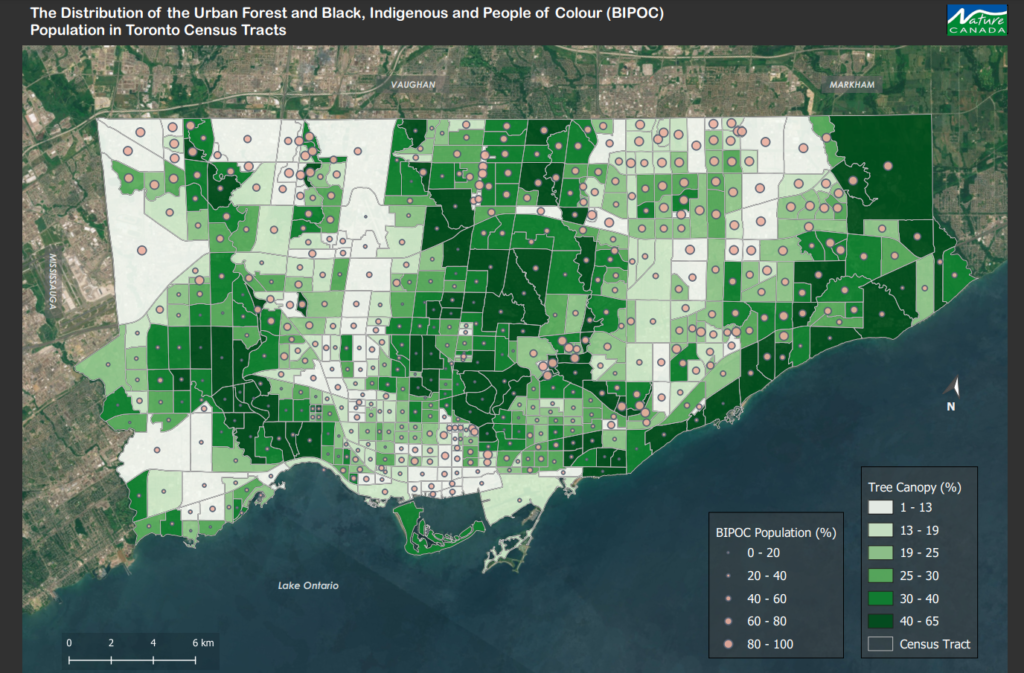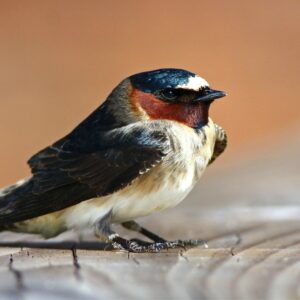Urban Parks and Forests Are Missing in Racialized and Marginalized Neighbourhoods
Building more equity in urban green space means tackling equity of access in terms of park proximity, urban park quality, and governance of urban parks and forest planning.
Nature Canada is pleased to be participating in consultations for Parks Canada’s urban park policy framework following the federal commitment to creating 15 new national urban parks across the country. With about 82% of Canadians living in urban centres, we need to design livable cities that ensure all residents have equitable access to urban parks.
Urban parks have been increasingly recognized as an important part of more liveable, healthy, and resilient cities. They provide many benefits like removing and storing carbon, mitigating urban heat islands and are home to many species. Urban parks also help to shield us from extreme weather like floods and landslides and support our mental and physical well-being by providing opportunities for recreation and access to nature. The COVID-19 pandemic has demonstrated the value of urban parks and other green spaces to Canadians.
Nature is for everyone, but not everyone is able to enjoy its benefits to the same degree.
Nationally, wealthier neighbourhoods tend to have not only higher tree cover but also a greater diversity of species.
Recent research shows that low-income—often racialized and marginalized communities–tend to not only have less access to urban parks and tree cover than richer neighbourhoods but are also located within lower-quality natural environments.

Addressing this disparity is not only an issue of environmental justice, it is critical for nature’s very survival. We must urgently restore people’s connection to nature and build a strong and diverse community of nature advocates.
We are pleased to see Parks Canada recognizing that ensuring new urban parks are more inclusive, accessible, and welcoming is the key to connecting more Canadians to nature.
Bridging the urban nature gap in racialized and marginalized neighbourhoods
As Nature Canada works to highlight the importance of reforesting Canada, we have been researching and consulting on how to ensure more equitable access to the urban tree canopy for racialized and low-income communities. Urban tree canopy, defined as all-natural and planted trees in private and public areas, is a key component of urban parks and green spaces. We will be releasing a report on these findings soon, but our emerging findings have important implications for how the government should pursue issues of equity and access for the urban parks agenda.
Our research shows that we must consider three interrelated dimensions of equity for racialized and low-income communities when expanding urban parks and green spaces: the proximity of parks and green spaces, the quality of these natural spaces, and increasing the voice and power of racialized and marginalized communities in governance including the planning and managing urban parks and forests. These three dimensions are explained below.
- Park proximity: The World Health Organization (WHO) recommends that urban residents have access to at least 0.5-1ha of public green space within 300m or a 5 to 10-minute walk from their home. In cases where this is not possible, Parks Canada can work with municipalities to provide adequate and affordable transportation infrastructure to make urban parks more accessible for racialized and marginalized groups.
- Urban park quality: In order to meet wildlife needs and the cultural needs of urban park users, parks must have locally appropriate tree species with special attention to the priorities of urban Indigenous communities. Planting of culturally appropriate species supports Indigenous cultures and connects patches of forests across the city in a way that promotes urban biodiversity. Nature Canada welcomes the recent announcement that Parks Canada will work closely with Indigenous partners to ensure that a national urban park in the Edmonton region showcases Indigenous stewardship, voices and stories, and offers opportunities for connections to the land and water-based on Indigenous Knowledge and values.
- Racialized and marginalized voices in governance: The participation of racialized, Indigenous and other marginalized groups in the planning and management of urban parks is essential to ensure their specific needs and interests are addressed; including park location, the quality of the space, and more generally, actual influence over the outcomes. Increased roles in planning and governance improve social inclusion and foster the trust of these communities with the project. This is likely to increase future usage of the space and ensure long-term involvement in nature stewardship and conservation.
Conclusion
Ensuring that racialized and marginalized communities have increased access to urban parks and other green spaces is an urgent matter of environmental justice. However, equity is about more than just where the green space is located. Equity should be determined in terms of the proximity of urban parks and green spaces, the quality of those natural spaces, and equity in the governance of urban parks. Approached this way, increasing access to green space can make an important contribution to the Government’s overall goals to halt and reverse biodiversity loss by 2030 and to build a more equitable, carbon-neutral and nature positive future for all.
Stay tuned for our forthcoming report on building more equitable access to the urban tree canopy!
Have your say on the Parks Canada consultation. Help Park People better understand how to make parks and green spaces in Canadian cities more safe, welcoming and resilient by answering this quick survey by April 3rd, 2022.
For more information contact: vvabi@naturecanada.ca or ewhittingham@naturecanada.ca



